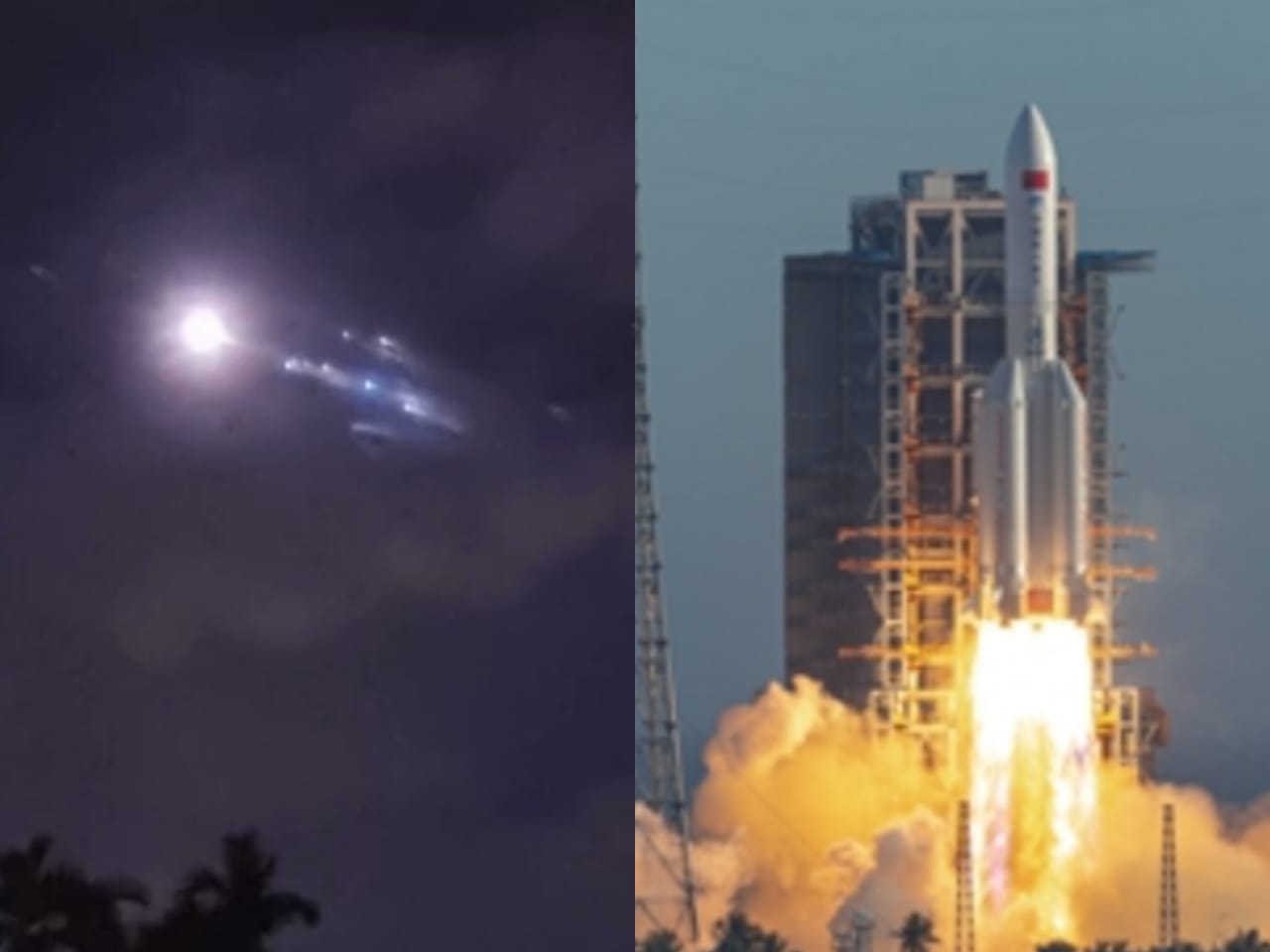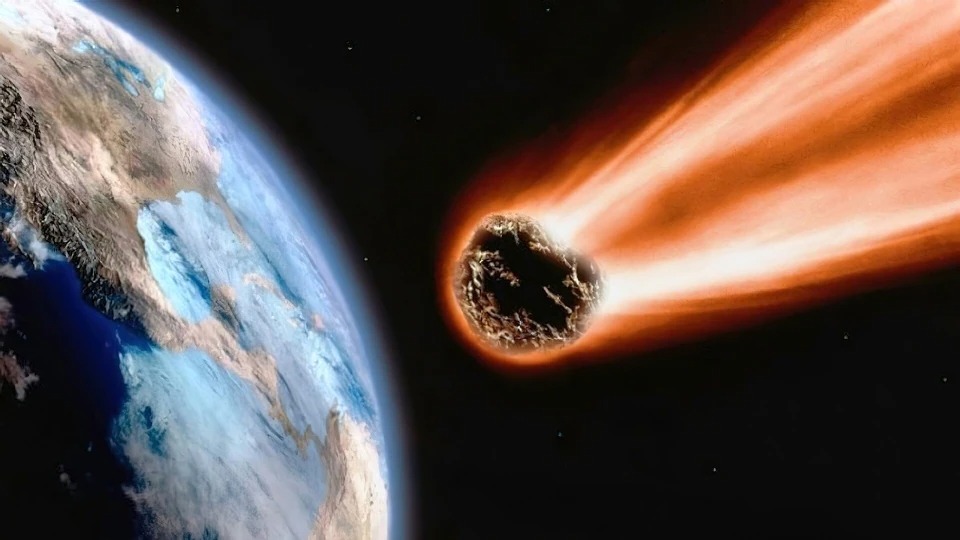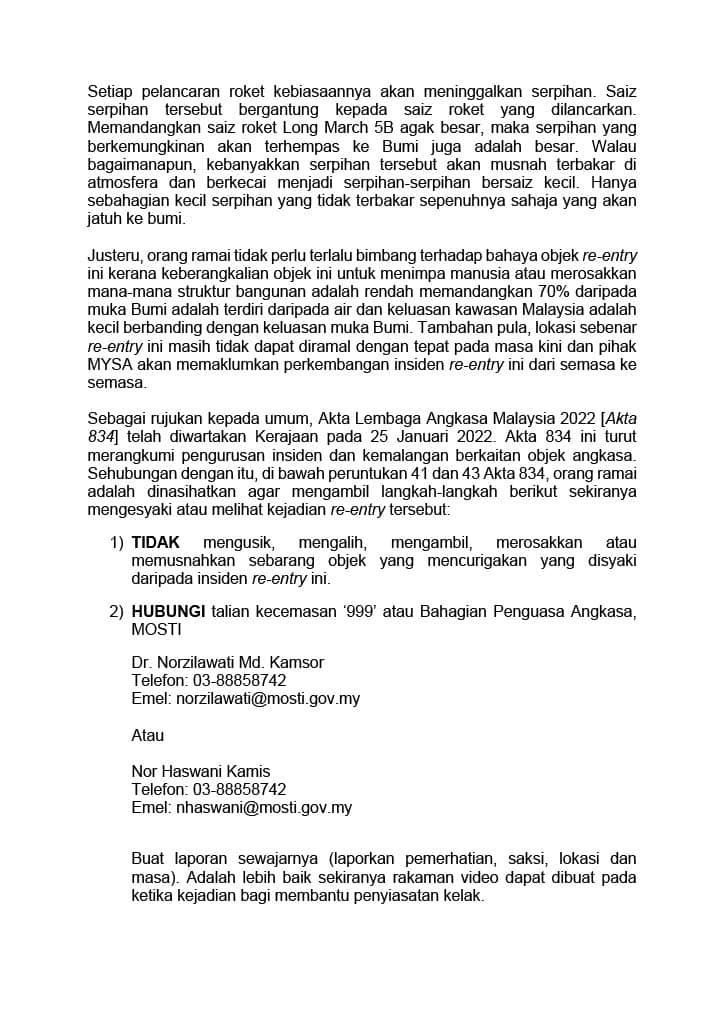WATCH: ‘Meteor’ Spotted Over Kuching Skies Believed To Be Debris From China’s Long March Rocket
 Thirsty for JUICE content? Quench your cravings on our Instagram, TikTok and WhatsApp
Thirsty for JUICE content? Quench your cravings on our Instagram, TikTok and WhatsApp

Netizens were treated to a spectacular sight yesterday (July 31) shortly past midnight when a video recording of what seemed to be a meteor was seen hovering in the sky somewhere in Kuching, Sarawak.
With over 21,000 retweets to date, viewers expressed various speculations of what the object might be, some even believing that it was an indication of extraterrestrial life.
However, it was confirmed the following morning that the strange object was presumed to be debris from China’s Long March rocket.
NASA officially stated that the rocket’s 22.5 tonne core stage re-entered Earth’s atmosphere around 12.45 a.m. on July 31, over the Indian Ocean.
“The clip from Kuching suggests it was high in the atmosphere at the time, any debris may touch down hundreds of kilometres further along track, near Sibu, Bintulu, or even Brunei,” astrophysicist Jonathan McDowell wrote on Twitter.
Final orbit of the #CZ5B rocket stage 2022-085B.
Time and location of final CSpOC TIP message for the reentry match well with the sightings from Kuching (Sarawak, Malaysian Borneo) pic.twitter.com/2gXlQl782U— Dr Marco Langbroek (@Marco_Langbroek) July 30, 2022
The Long March 5B rocket was launched from the Wenchang Spacecraft Launch Site, Wenchang, China on 24 July 2022 to deliver the 23,000kg Wentian module to the Tiangong Space Station.
The core stage of the Long March 5B rocket entered Low Earth Orbit (Low Earth Orbit) at an altitude of 298km to orbit the earth to release the Wentian module to the Tiangong Space Station.
Due to the strong atmospheric drag on this orbit, the rocket debris was expected to enter the Earth’s atmosphere within a few days, after the delivery.
McDowell, a Harvard-Smithsonian Center for Astrophysics astrophysicist, later stated, “Space Force affirmed decay at 1651 UTC approx 113E 3 N (Bintulu, Sarawak).”

Initially, the Malaysian Space Agency remarked that the rocket’s debris was highly improbable to land in Malaysia; nevertheless, the exact location of re-entry could not be foreseen accurately until a few hours before it takes place.
Based on scientific principles, there will usually be elements of uncertainty associated with any measurement or prediction produced. In most cases of re-entry, the associated uncertainty of the re-entry location prediction is very large due to changes in the rate of density of the upper atmosphere, the physical properties of the re-entry object such as mass and material composition, as well as the location and speed of the object.

According to the agency, most rockets leave debris upon launching. The size of the debris depends on the size of the rocket launched. Since the size of the Long March 5B rocket is quite large, the debris that was likely to crash into the Earth was also big.
However, most of the debris will burn up in the atmosphere and disintegrate into small fragments and only a small fraction of the debris that is not completely burned will fall to earth.
Therefore, the public does not need to worry too much about the danger of this re-entry object as the probability of it colliding with people or building structures is low, considering that 70% of the Earth’s surface is made up of water, and the area of Malaysia is small compared to the area of the earth.
The exact location of this re-entry is still not accurately predicted at present and MYSA will inform the public on the development of the incident from time to time.
Citizens have also been advised not to tamper with, remove, take, damage or destroy any unknown objects suspected to have surfaced on earth following this occurrence.


 Get Audio+
Get Audio+ Hot FM
Hot FM Kool 101
Kool 101 Eight FM
Eight FM Fly FM
Fly FM Molek FM
Molek FM

